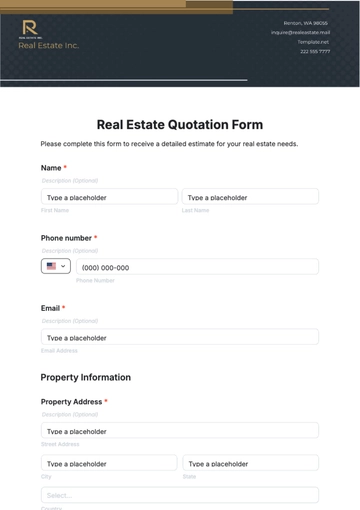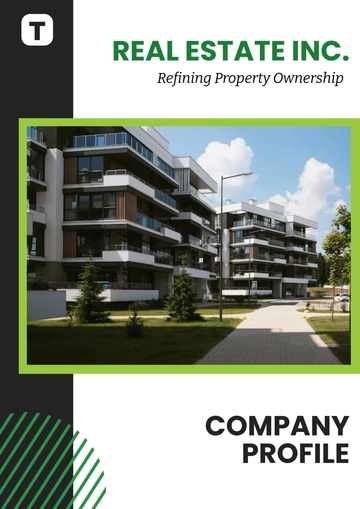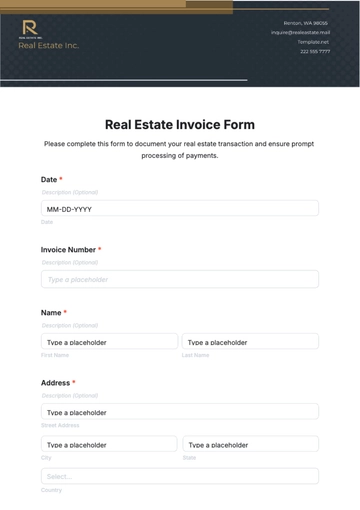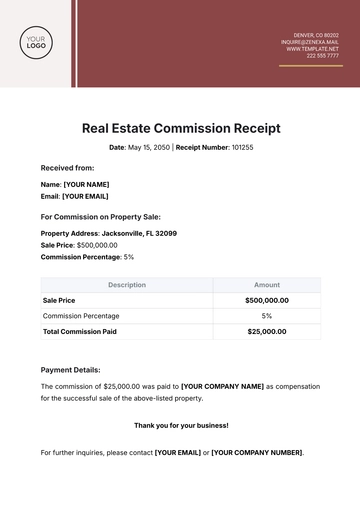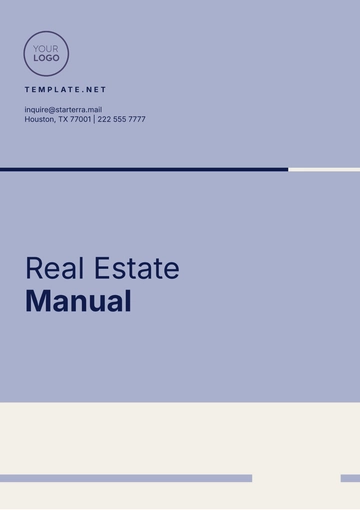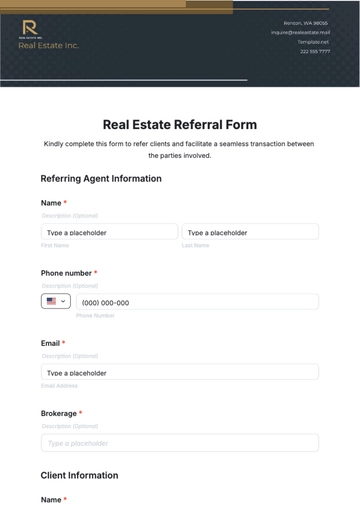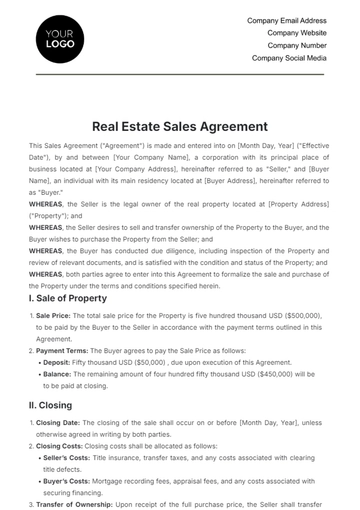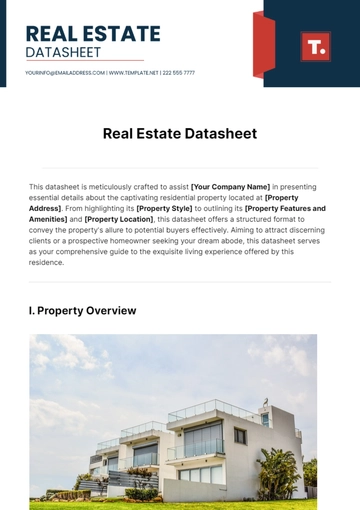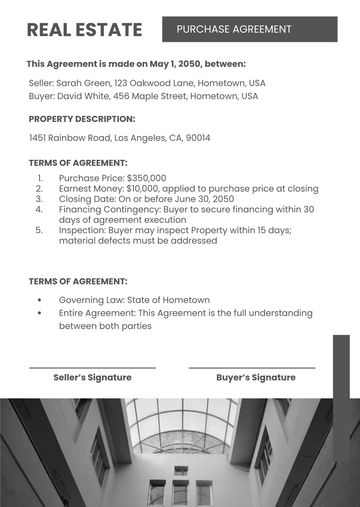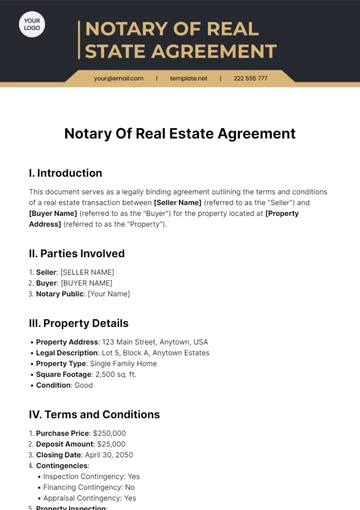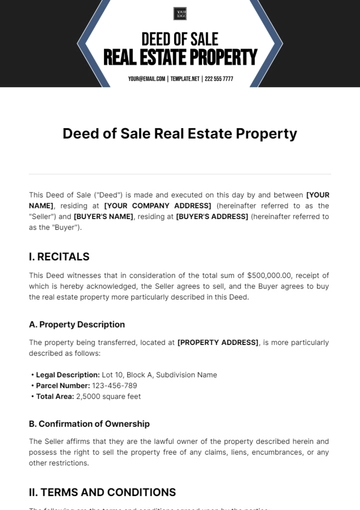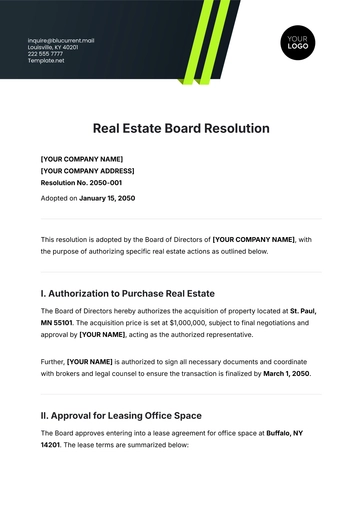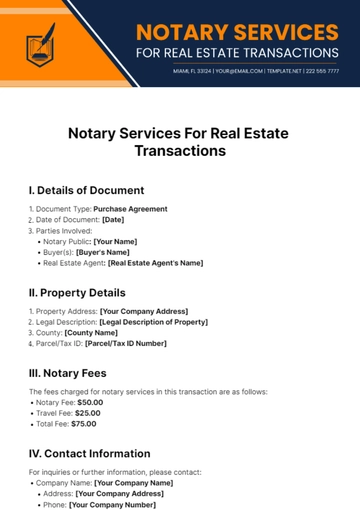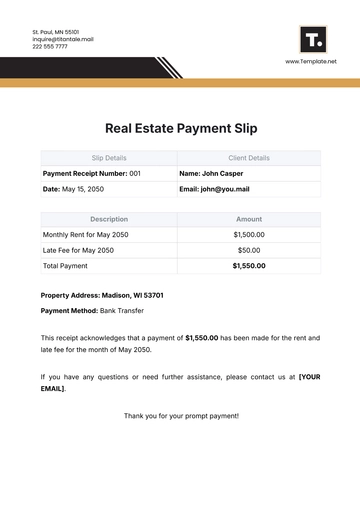Free Real Estate Capital Improvement Planning
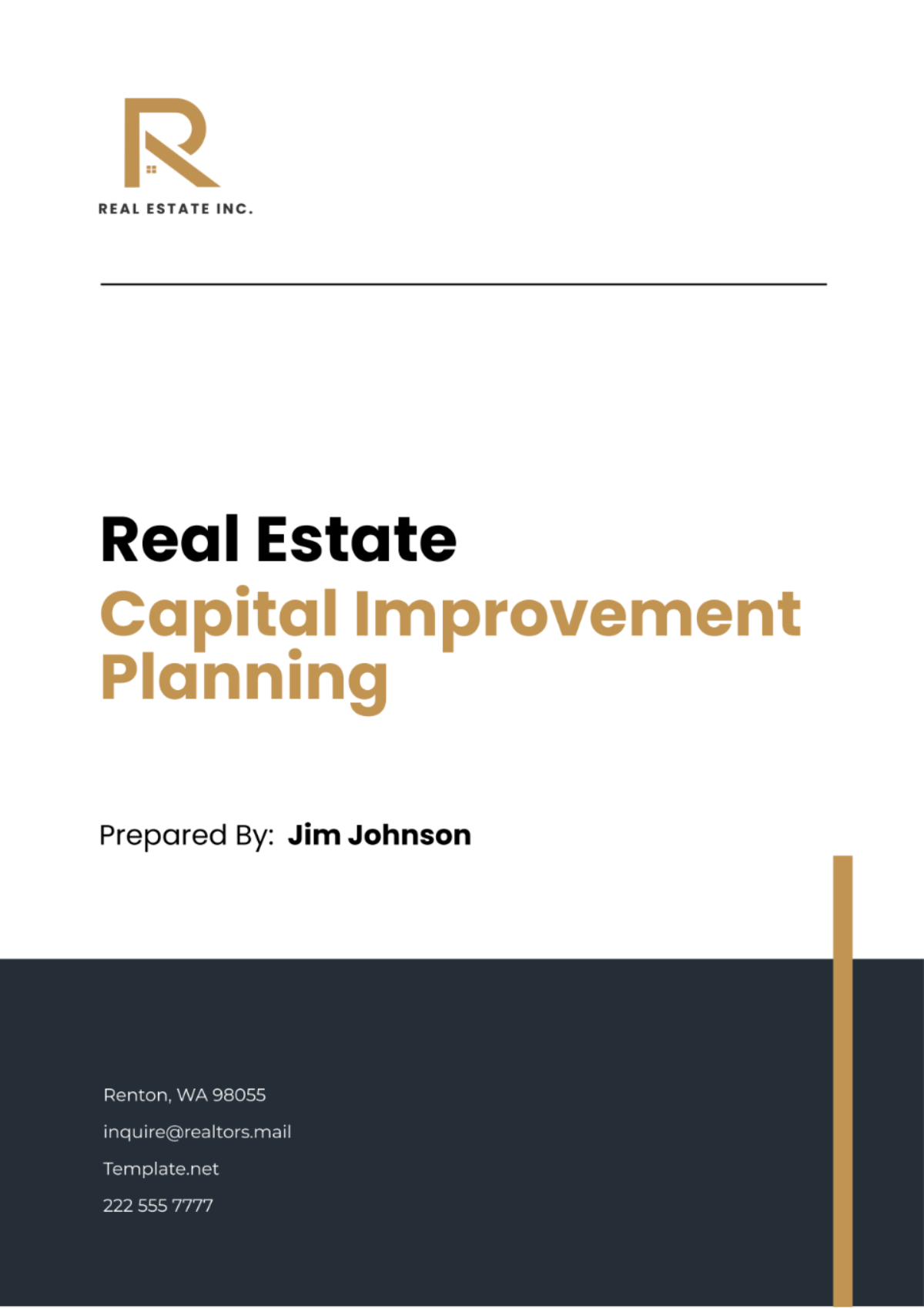
I. Introduction
A. Overview
Purpose of the Capital Improvement Planning
The Capital Improvement Planning (CIP) outlines [Your Company Name]'s strategy to enhance the value and functionality of our real estate properties through targeted investments in infrastructure, facilities, and amenities. By systematically planning and implementing capital improvements, we aim to optimize property performance, increase tenant satisfaction, and maximize long-term returns on investment.
Scope of the Document
This document comprehensively details the process of assessing current property conditions, identifying necessary capital improvements, budgeting, and scheduling implementation. It serves as a guiding framework for decision-making and resource allocation across [Your Company Name]'s real estate portfolio.
Audience
The primary audience for this Capital Improvement Planning includes property owners, investors, property managers, and stakeholders involved in the strategic management and financial oversight of real estate assets within [Your Company Name]'s portfolio.
II. Current Property Assessment
A. Property Details
Property Name: | Lakeside Apartments |
Location: | [Your Property Address] |
Property Type: | Multifamily Residential |
Year Built: | 2050 |
Current Condition: | Good |
Current Market Value: | [$15,000,000] |
B. Inspection and Evaluation
Inspection Date: January 15, 2024
Inspector: [Name], Certified Property Inspector
Assessment Criteria:
Criteria
Assessment
Structural Integrity
Excellent
Mechanical Systems
Good
Interior Finishes
Fair
Exterior Elements
Good
Safety Features
Satisfactory
Findings:
Category
Summary
Strengths
Well-maintained structural components such as the foundation and roof.
Up-to-date mechanical systems including HVAC and plumbing.
Adequate exterior maintenance ensuring the property's curb appeal.
Weaknesses
Interior finishes showing signs of wear and tear, particularly in common areas such as hallways and lobby spaces.
Limited safety features such as fire alarms and emergency lighting need upgrading to meet current standards.
Opportunities
Opportunity to enhance curb appeal with landscaping improvements, including the addition of outdoor amenities such as seating areas or a community garden.
Potential to upgrade interior finishes to attract higher-paying tenants and increase rental income.
Threats
Risk of increased maintenance costs if safety features are not upgraded promptly, leading to potential liabilities in case of accidents.
Competitive threat from newer developments in the vicinity offering modern amenities and updated living spaces.
III. Capital Improvement Plan
A. Objectives
Long-term Goals
Increase property value by [$2,000,000] within the next [5] years through strategic upgrades and renovations.
Enhance tenant satisfaction and retention rates by improving living conditions and amenities, aiming for a [15%] increase in lease renewals over the next [3] years.
Ensure compliance with current safety and building code regulations to mitigate legal and financial risks.
Short-term Goals
Complete critical safety upgrades within the next [12] months to address immediate risks and ensure tenant safety.
Commence interior renovation projects within [6] months to improve tenant comfort, attract higher-quality renters, and differentiate the property in the market.
Implement landscaping improvements within [3] months to enhance curb appeal, foster a sense of community, and create inviting outdoor spaces for residents.
Financial Targets
Allocate [15%] of annual property income towards capital improvements, totaling [$300,000] for the current fiscal year.
Achieve a return on investment (ROI) of [15%] or higher for each capital improvement project to ensure financial viability and maximize long-term profitability.
B. Prioritization of Projects
Criteria for Prioritization
Impact on property value and rental income, considering potential rental rate increases and property appreciation.
Urgency based on safety concerns and regulatory compliance to address critical issues promptly.
Potential for tenant satisfaction and retention, focusing on amenities and features that resonate with target tenant demographics.
Ranking of Projects
Project
Priority Level
Estimated Cost
Fire Alarm System Upgrade
Critical
[$50,000]
Interior Renovations
High
[$150,000]
Landscaping Improvements
Medium
[$30,000]
Elevator Modernization
Low
[$100,000]
C. Project Details
Project Name
Timeline
Budget Allocation
Resources Required
Responsible Parties
Fire Alarm System Upgrade
[3 months]
[$50,000]
Contractors
Property Manager
Interior Renovations
[12 months]
[$50,000]
Interior Designers, Contractors
Property Manager, Construction Team
Landscaping Improvements
[6 months]
[$30,000]
Landscaping, Contractors
Property Manager
Elevator Modernization
[9 months]
[$100,000]
Elevator Maintenance Crew
Property Manager, Construction Team
IV. Financial Analysis
A. Budget Projection
Total Capital Expenditure Forecast: [$330,000]
Breakdown by Project
Project
Estimated Cost
Fire Alarm System Upgrade
[$50,000]
Interior Renovations
[$150,000]
Landscaping Improvements
[$30,000]
Elevator Modernization
[$100,000]
B. Funding Sources
Internal Funding: [$250,000] allocated from [Your Company Name]'s operational budget for capital improvements.
External Funding (if applicable): [$80,000] secured through a commercial loan to supplement internal funds and ensure timely project completion.
C. Return on Investment (ROI)
Calculation Methodology: ROI = (Net Profit / Investment Cost) * 100
Anticipated ROI for Each Project
Project
Anticipated ROI
Fire Alarm System Upgrade
[20%]
Interior Renovations
[18%]
Landscaping Improvements
[25%]
Elevator Modernization
[15%]
V. Monitoring and Reporting
A. Progress Tracking
Key Performance Indicators (KPIs)
Monthly progress reports detailing completion status, expenditures, and any deviations from the original plan, including metrics such as:
Percentage of project completion
Budget variance
Schedule adherence
Quarterly property inspections to assess the quality of completed improvements and identify any emerging issues, focusing on:
Compliance with safety regulations
Tenant feedback on improvements
Condition of upgraded areas compared to pre-improvement state
Milestone Tracking
Establish milestones for each project, such as completion of design phase, procurement of materials, and final installation, with specific dates and deliverables.
Regular review meetings to monitor progress against milestones and address any delays or obstacles promptly, with action items assigned to responsible parties and deadlines for resolution.
B. Reporting Mechanism
Frequency of Reports
Monthly financial reports providing updates on actual expenditures versus budgeted costs for each project, detailing:
Total expenses incurred
Variance analysis
Forecasted spending for upcoming months
Quarterly progress reports including status updates, milestones achieved, and upcoming tasks, with a focus on:
Progress towards project goals
Risks and challenges encountered
Mitigation strategies implemented
Reporting Format
Consolidated reports with visual aids such as charts and graphs to illustrate progress and financial performance, ensuring:
Clarity and ease of understanding for stakeholders
Comparison of actual versus planned performance
Identification of trends and patterns over time
Detailed narratives outlining project status, challenges encountered, and proposed solutions, providing:
Context for the data presented
Insights into the factors influencing project outcomes
Recommendations for future actions and adjustments
C. Performance Review
Evaluation Criteria
Compare actual performance against predefined KPIs to assess the effectiveness of capital improvement projects, evaluating:
Achievement of project objectives
Cost-effectiveness of investments
Impact on property value and tenant satisfaction
Solicit feedback from tenants and property management staff to gauge satisfaction with completed upgrades, focusing on:
Perception of improvements in quality of life
Ease of use and functionality of upgraded amenities
Suggestions for further enhancements or areas needing attention
Adjustment Strategies
Implement corrective actions as needed to address deviations from planned timelines or budget overruns, including:
Revising project schedules or resource allocations
Negotiating with contractors/vendors to minimize cost overages
Implementing alternative solutions to mitigate risks and delays
Modify future capital improvement plans based on lessons learned and feedback received during performance reviews, incorporating:
Best practices identified from successful projects
Insights into areas needing additional investment or attention
Evolving market trends and tenant preferences
VI. Conclusion
A. Summary of Plan
Recap of Objectives
The Capital Improvement Plan aims to enhance property value, tenant satisfaction, and regulatory compliance through targeted investments in infrastructure and amenities, aligning with [Your Company Name]'s overarching strategic goals.
Highlights of Key Projects
Fire alarm system upgrade to improve safety measures and compliance with building codes, ensuring the well-being of residents and minimizing liability risks.
Interior renovations to modernize common areas and attract high-quality tenants, creating inviting and functional spaces that enhance the overall living experience.
Landscaping improvements to enhance curb appeal and create inviting outdoor spaces, fostering a sense of community and pride among residents.
Elevator modernization to improve reliability and efficiency for residents, ensuring accessibility and convenience while enhancing the property's marketability.
B. Next Steps
Implementation Timeline
Execute projects according to the established timeline, with regular monitoring and adjustment as necessary to ensure successful completion within budget and schedule constraints.
Follow-up Actions
Continue to monitor project progress, track financial performance, and solicit feedback from stakeholders to inform future decision-making, ensuring ongoing alignment with [Your Company Name]'s strategic objectives.
- 100% Customizable, free editor
- Access 1 Million+ Templates, photo’s & graphics
- Download or share as a template
- Click and replace photos, graphics, text, backgrounds
- Resize, crop, AI write & more
- Access advanced editor
Plan capital improvements effectively with the Real Estate Capital Improvement Planning Template from Template.net. This editable and customizable template simplifies the process, ensuring strategic allocation of resources for property enhancements. Tailor it to your needs using our Ai Editor Tool for a personalized approach. Streamline your planning and maximize property value today.

